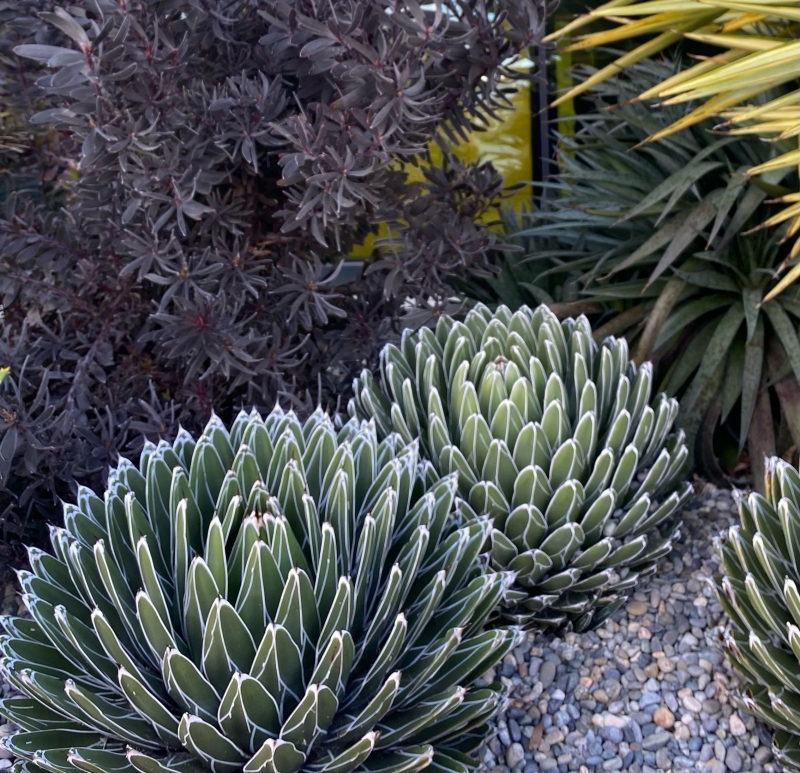

| height | 10–14in | |
| width | 12–16in | |
| tolerates | Cold, Drought, Deer , Heat, Pots, Rooftops, Neglect, Wind | |
| water needs |
Lowest | |
| water info |
Agave plants are extremely drought tolerant, and many need no supplemental irrigation in coastal California. They will, however, look better and grow faster if they are given additional water, especially during summer. | |
| hardy to |
0F | |
| exposure | Part Sun – Full Sun | |
| indoor outdoor |
Outdoor | |
| drainage | In Ground: Cactus Mix, In Pots: Cactus Mix | |
| fertilizing | All Purpose 1/2 Strength, Low Needs | |
| origin | NC Mexico | |
| california native |
No | |
| sunset zones |
10–24 |
Full Sun
Six or more hours of sun beams directly landing on the plant's leaves.
Part Shade
Three to five hours of sun beams directly landing on the plant's leaves.
Part Sun
One to two hours of sun beams directly landing on the plants leaves.
Full Shade
The plant is never fully lit by sun beams,
but is in a bright spot or has dappled sunbeams playing over the leaves throughout the day.
Deep Shade
The plant never has dappled light on the leaves, and is in a place that feels dim, even on a nice sunny day.
